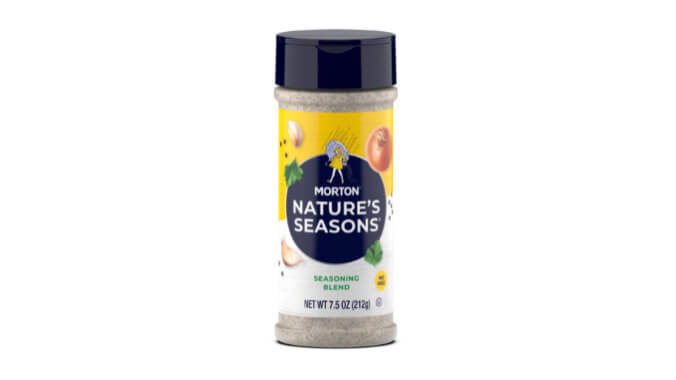Nature’s Seasons: The Seasoned Salt Of My Childhood
Photo courtesy of Morton's
Like many children, I had some odd food habits as a kid. One of my favorite snacks—a snack I could make on my own without help from my mom and dad—only featured two ingredients: a slice of white bread and Morton’s Nature’s Seasons seasoned salt blend. I would take a slice of the soft, pliable bread, flatten it a bit with my palm, and then sprinkle the spice mix on top. No butter, no olive oil… just bread and Nature’s Seasons.
The bread was fine, of course, but the point of this snack was to indulge in the savory flavors of the spice mix, a prized blend in our home. Nature’s Seasons was always on the table next to the salt and pepper, served at every meal as a flavor enhancer, regardless of what we were eating. I enjoyed it most on carb-heavy dishes where it could really shine, where it didn’t have to fight the stronger flavors of vegetables or meat.
To me, at that point in my life, Nature’s Seasons wasn’t a way to enhance food. Rather, the food was there to simply provide a base for the seasoning mix, which understandably did not taste great on its own (I tried).
The blend is a simple combination of common spices that my mom probably put in most dishes we ate anyway: It contains salt and pepper along with sugar, celery seed, parsley and natural garlic and onion flavors. But for some reason, this specific blend, this specific ratio of spices, always, always hit the right note for me when I was a kid. I genuinely don’t remember eating anything savory without it before I reached high school.
Gradually, though, I stopped adding Nature’s Seasons to my food, opting instead for plain salt and pepper. I don’t know exactly why or when this transition occurred, but by the time I left home, I never used Nature’s Seasons. I didn’t have it in my shitty dorm room kitchen in college, nor does it have a home amongst my many containers of seasoning blends in my adult home now.
-

-

-

-

-

-

-

-

-

-

-

-

-

-

-

-

-

-

-

-

-

-

-

-

-

-

-

-

-

-

-

-

-

-

-

-

-

-

-

-








































